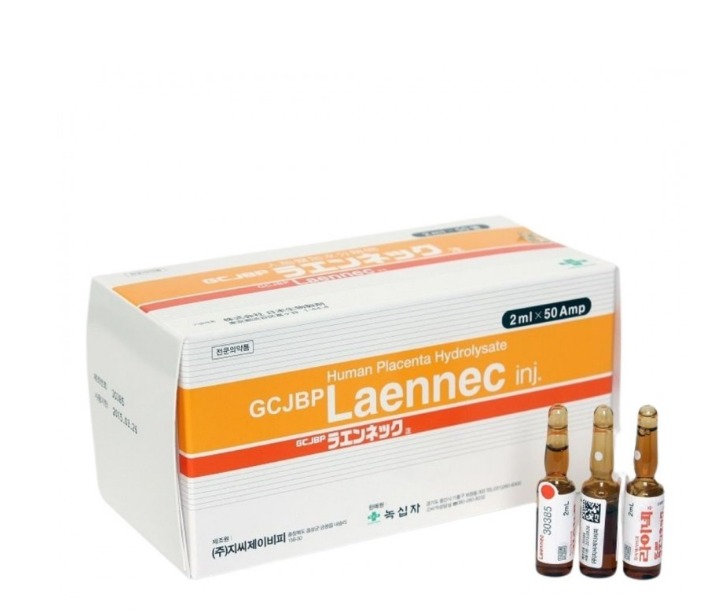Placenta therapy, also known as placental extract therapy or placenta injections, has gained attention in recent years for its potential benefits in aesthetic and regenerative medicine. Derived from the placenta, a temporary organ that nourishes and protects a developing fetus during pregnancy, placenta extracts are rich in nutrients, growth factors, and bioactive compounds that may promote skin rejuvenation, wound healing, and tissue regeneration. In this article, we will explore the science, applications, and potential advantages of placenta therapy in aesthetic and regenerative medicine.
1. The Science Behind Placenta Therapy
The placenta is a remarkable organ that plays a vital role in supporting fetal development by delivering oxygen, nutrients, and hormones to the fetus while filtering waste products from the maternal bloodstream. It is composed of various tissues and cells, including mesenchymal stem cells, growth factors, amino acids, peptides, and vitamins, which are essential for fetal growth and development.
Placenta therapy involves the extraction and processing of these bioactive components from the placenta to create concentrated formulations, such as placental extracts, serums, and injections. These formulations are then administered topically or via injections to target specific concerns, including aging skin, hair loss, scars, and musculoskeletal injuries visit here https://dermalfillers2000.shop.
2. Applications in Aesthetic Medicine
Placenta therapy has gained popularity in aesthetic medicine for its potential anti-aging and skin-rejuvenating benefits. The rich concentration of growth factors, peptides, and antioxidants in placental extracts may stimulate collagen production, improve skin elasticity, and enhance overall skin tone and texture.
Topical placenta serums and creams are often used to address signs of aging, fine lines, wrinkles, and hyperpigmentation. Additionally, placenta injections may be administered to promote tissue regeneration, reduce inflammation, and accelerate wound healing following aesthetic procedures, such as laser treatments, microneedling, and dermal fillers.
3. Potential Benefits in Regenerative Medicine
In regenerative medicine, placenta therapy holds promise for treating various medical conditions and injuries by harnessing the regenerative and immunomodulatory properties of placental-derived stem cells and growth factors. Research suggests that placental extracts may stimulate tissue repair, modulate immune responses, and promote angiogenesis (the formation of new blood vessels), making them potential candidates for treating chronic wounds, osteoarthritis, and musculoskeletal injuries.
4. Considerations and Precautions
While placenta therapy offers promising potential benefits, it is essential to approach it with caution and consideration of certain precautions:
- Safety and Purity: Ensure that placental extracts are obtained from reputable and certified sources to guarantee safety, purity, and quality. Rigorous screening, testing, and processing methods should be employed to eliminate potential contaminants and ensure the integrity of the bioactive components.
- Allergic Reactions: Like any biological product, some individuals may be allergic or hypersensitive to placental extracts. A thorough allergy test and consultation with a healthcare professional are recommended prior to initiating treatment to identify any potential sensitivities and minimize the risk of adverse reactions.
- Regulatory Compliance: Adhere to regulatory guidelines, ethical standards, and legal requirements governing the use, extraction, and administration of placental-derived products to ensure compliance, transparency, and accountability in practice.
5. Future Perspectives and Innovations
As research continues to advance, the potential applications and innovations in placenta therapy are expected to expand, offering new insights, formulations, and treatment protocols in aesthetic and regenerative medicine. Ongoing studies are focused on optimizing extraction methods, refining formulations, exploring novel applications, and evaluating the long-term safety, efficacy, and outcomes of placenta therapy in diverse clinical settings.
Conclusion
Placenta therapy represents a promising and evolving frontier in aesthetic and regenerative medicine, offering a natural and holistic approach to skin rejuvenation, tissue regeneration, and overall wellness. While further research and clinical evidence are needed to fully elucidate the mechanisms, benefits, and optimal applications of placenta therapy, early findings and clinical observations suggest its potential as a valuable addition to the therapeutic armamentarium in modern medicine.
As with any medical intervention, it is crucial to approach placenta therapy with informed decision-making, expert guidance, and personalized care to ensure safe, effective, and tailored treatment outcomes. By staying informed, adhering to best practices, and prioritizing patient safety and satisfaction, healthcare professionals can harness the potential of placenta therapy to innovate, enhance, and transform the landscape of aesthetic and regenerative medicine for the betterment of patient care and quality of life.

